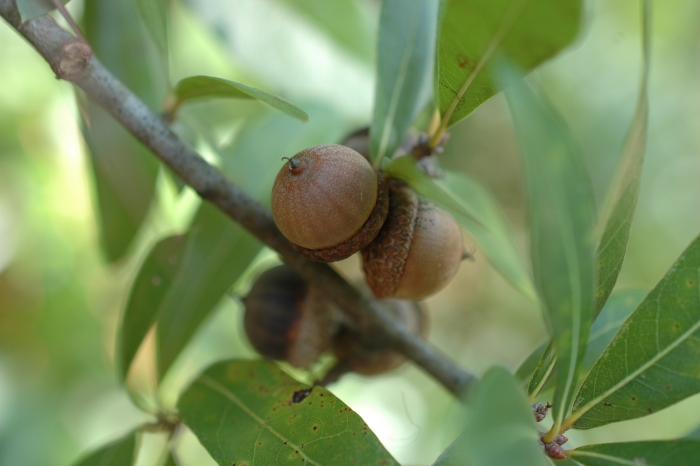Darlington Oak
(Quercus hemisphaerica)
Darlington Oak (Quercus hemisphaerica)
/
/

Bruce Kirchoff from Greensboro, NC, USA
CC BY 2.0
Image By:
Bruce Kirchoff from Greensboro, NC, USA
Recorded By:
Copyright:
CC BY 2.0
Copyright Notice:
Photo by: Bruce Kirchoff from Greensboro, NC, USA | License Type: CC BY 2.0 | License URL: https://creativecommons.org/licenses/by/2.0 | Uploader: Ser Amantio di Nicolao | Publisher: Wikimedia Commons | Title: Quercus_hemisphaerica_(24144038835).jpg | Notes: Uploaded own work with UploadWizard |
















































Estimated Native Range
Summary
Quercus hemisphaerica, commonly known as Darlington Oak or Laurel Oak, is a medium-sized tree that can be evergreen or semi-deciduous depending on the climate. It is native to the coastal plains and sandy uplands of the southeastern United States, often found in mixed forests, open woodlands, and along streams. This species typically reaches up to 60-80 feet in height with a spread of 60-70 feet, featuring a rounded crown of dense foliage. The leaves are elliptical, glossy green, and may turn yellow-brown in fall if deciduous. The acorns, which are hemispheric and mature in 18 months, are a valuable food source for wildlife.
Darlington Oak is appreciated for its adaptability to various soil conditions, including xeric sandy soils, and its ability to withstand urban environments. It is often used for shade in residential areas, parks, and along streets. This tree requires full sun to part shade and prefers well-drained soils. While it is generally low-maintenance, it can be susceptible to oak wilt and root rot if grown in poorly drained soils. It is also known to hybridize with Quercus laevis, which can affect the genetic diversity of the species.CC BY-SA 4.0
Darlington Oak is appreciated for its adaptability to various soil conditions, including xeric sandy soils, and its ability to withstand urban environments. It is often used for shade in residential areas, parks, and along streets. This tree requires full sun to part shade and prefers well-drained soils. While it is generally low-maintenance, it can be susceptible to oak wilt and root rot if grown in poorly drained soils. It is also known to hybridize with Quercus laevis, which can affect the genetic diversity of the species.CC BY-SA 4.0
Plant Description
- Plant Type: Tree
- Height: 40-60 feet
- Width: 30-40 feet
- Growth Rate: Rapid
- Flower Color: N/A
- Flowering Season: Spring
- Leaf Retention: Evergreen, Semi-deciduous
Growth Requirements
- Sun: Full Sun, Part Shade
- Water: Low, Medium
- Drainage: Fast, Medium
Common Uses
Bird Garden, Butterfly Garden, Low Maintenance, Street Planting
Natural Habitat
native to the coastal plains and sandy uplands of the southeastern United States, often found in mixed forests, open woodlands, and along streams
Other Names
Common Names: Laurel Oak , Swamp Laurel Oak , Darlington’s Oak , Sand Laurel Oak , Laurel Leaf Oak
Scientific Names: Quercus hemisphaerica , Dryopsila maritima , Quercus geminata f. maritima , Quercus hemisphaerica var. hemisphaerica , Quercus hemisphaerica var. maritima , Quercus hemispherica var. maritima , Quercus laurifolia subsp. maritima , Quercus laurifolia var. maritima , Quercus maritima , Quercus maritima
GBIF Accepted Name: